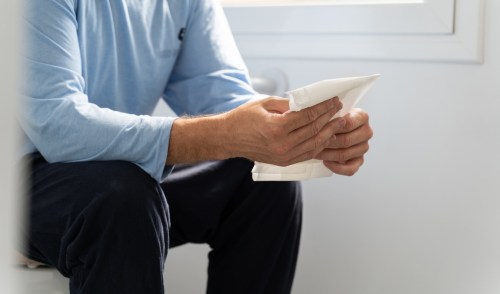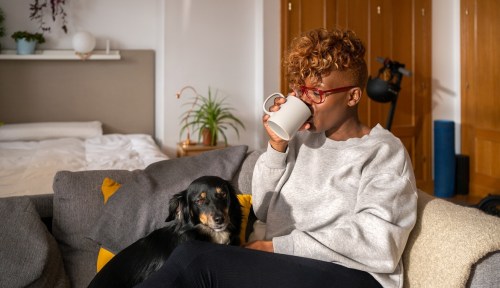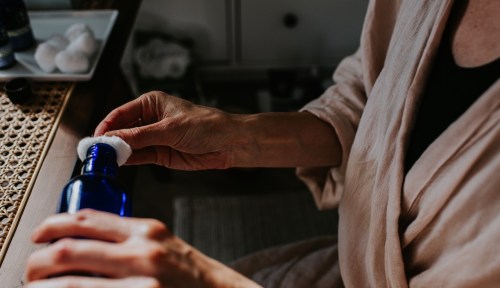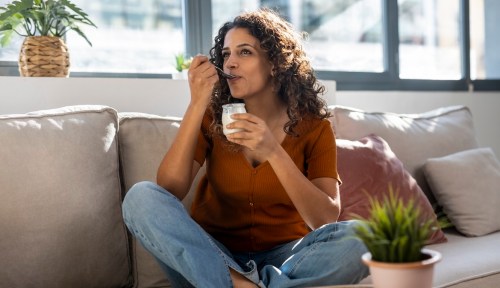Many of us have been told to get to know our vaginas. But according to an anal surgeon, that’s not the only area down there we should be getting up close and personal with. Enter: The at-home anus exam, something everyone should be doing regularly.
Experts in This Article
anal surgeon and founder of Bespoke Surgical and Future Method
owner and CEO of Lugo Surgical Group
“Self-examination, both externally and internally, is key for many body parts, and the butt is no exception,” says Evan Goldstein, DO, anal surgeon and founder of Future Method, though he acknowledges it’s not exactly the easiest part to examine (even for the most flexible people).
His fix? Grab a hand mirror, or better yet, snap a selfie of your anus and zoom in for a high-definition view. “Regardless of which method you use, first and foremost, you should understand your local anatomy,” says Dr. Goldstein.
But what is the purpose of a rectal self-exam? Well, “because there’s skin, muscle, and some blood vessels in the anal region, there’s potential for pathologies to exist—like polyps, hemorrhoids, fissures, and even colorectal cancer,” Dr. Goldstein says. “A rectal exam can help you catch problems early, and help you learn more about how each part ‘normally’ functions.”
While every anus looks—and smells—different (which is why you should intimately get to know your own), there are a few things that healthy bums have in common, says Rafael A. Lugo, MD, FACS, the owner and CEO of Lugo Surgical Group.
What does a healthy butt look like?
1. A healthy anus should look like an even, circular set of “puckered lips,” with clear transition between the external skin and the “anal mucosa,” aka the inner lining of your anus.
2. There should be no visible cuts or lesions.
3. The mucosa should be a reddish color.
With that in mind, Dr. Lugo explains that any sort of discoloration, unevenness, bumps, or bulging could be a sign that something is wrong, particularly if the issue appears out of nowhere. If that is the case, you’ll want to call up your doctor.
“Seeing the anus frequently allows for us to detect a small change sooner,” says Dr. Lugo. “The benefit [of checking yourself out] is early detection of curable problems, that, if left undiagnosed, can turn into a more serious issue.”
How often should you do a self anus exam? (And who should do it?)
While the American Cancer Society recommends yearly rectal examinations at the doctor for anyone age 45 and older, there is really no limit to how often to check yourself at home, especially if you have symptoms like bleeding, itching, or irritation. It may be helpful to check yourself in the mirror, or use a lubricated finger to check internally, every few months.
That said, you may need to start screenings earlier than age 45, and on a more frequent basis, if you have any of the following risk factors, per the American Cancer Society:
- A strong family history of colorectal cancer or polyps
- Personal history of polyps or colorectal cancer
- Personal history of inflammatory bowel disease (like Crohn’s disease or ulcerative colitis)
- A known family history of hereditary colon cancer syndrome (like familial adenomatous polyposis or Lynch syndrome)
- Personal history of radiation to the abdomen or pelvic area to treat a previous cancer
Talk to your doctor about your family health history and any symptoms you have. They can help determine how often you need to do an at-home exam or go in for an anal health screening. Side note: If you’re a person with a prostate, your doctor may be able to check it at the same time, and share any prostate examination findings with you.
How to prepare for a self anus exam
There are a few things you can do to prep for your self-examination. Here are some tips:
- Bring a smaller “self-check mirror” in the bathroom, along with your phone or anything else you’d need to get a closer look.
- Make sure your anus is clean by washing it with soap and water, or a special butt wash. This can help remove any toilet paper bits in your butt, too.
- Wash your hands and use a glove and/or lubricant to make it easier to check inside your rectum. Rotate your finger if you can, to feel around for abnormalities. Note: This may feel uncomfortable, so try to relax by taking a deep breath.
- Figure out the best hemorrhoid examination position. This may be putting one foot up on the bathroom counter, bringing a knee to your chest, or lying on your stomach with one leg straight and one bent, per Stanford Medicine.
- A self-examination may irritate hemorrhoids, so using an over-the-counter hemorrhoid cream (like Preparation H) after the fact may help offer relief.
When to see a doctor
While self-exams are a helpful tool, they don’t take the place of a professional anal health check, so if you do sense that something is wrong, be sure to book an appointment with a doctor. They will often do a digital rectal examination (i.e., a physical exam) or a screening in the form of a colonoscopy. And in the meantime, grab a hand mirror—or an iPhone—and start to become familiar with the look and feel of your anus, to help catch changes early.
FAQ
How can you tell the difference between a hemorrhoid and a polyp?
It can be tricky to tell the difference between a hemorrhoid and a polyp. According to Keck Medicine of USC, a hemorrhoid is actually a swollen vein in the anus or rectum area that can cause itching, bright red blood on your toilet paper, pain during bowel movements, or a painful lump on or near your anus. Since they’re These are harmless and typically go away after a few days.
A polyp, on the other hand, is a small growth of excess tissue that’s usually found inside the colon or rectum (meaning, you can’t typically feel them near the opening of your anus like hemorrhoids), per the University of Michigan Health. While most polyps are benign, some can become cancerous over time, so it’s important to go to your doctor if you have symptoms like pain, rectal bleeding, or a change in bowel habits, per the Mayo Clinic.
Bottom line: It’s best to go to your doctor if you have any of the above symptoms, whether you feel a lump on your anus or not, just in case. And of course if you feel something during your at-home rectum checkup, let your doctor know.
Can you feel polyps with your finger?
While you or your doctor may be able to feel polyps by putting a gloved finger inside your rectum, polyps are usually discovered through a colonoscopy, according to Merck Manual. If anything suspicious is felt during a medical anus inspection, tests like a colonoscopy, blood work, or stool sample tests are ordered, to rule out anything serious like colon cancer.
What’s the difference between a colorectal exam and a colonoscopy?
There’s not much difference between a colorectal exam vs. colonoscopy, mostly because a colonoscopy is one type of colorectal exam. Others include DNA stool tests or a flexible sigmoidoscopy (i.e., a partial colonoscopy), per the Cleveland Clinic. Your doctor can help you decide which type of exam is best for you, depending on your symptoms and risk factors, per the U.S. Department of Health and Human Services.
—reviewed by Jennifer Logan, MD, MPH
Sign Up for Our Daily Newsletter
Get all the latest in wellness, trends, food, fitness, beauty, and more delivered right to your inbox.
Got it, you've been added to our email list.











